
Museo Winter Line - Pianoro 3805074820
Museo della 2^GM del Fiume Po – Felonica 348/3157390
Museo Memoriale della Libertà – Bologna 051/461100
The finding of the Douglas A-20K Boston Mark V sn BZ590
by Andrea Gatti and Simone Guidorzi
Felonica July 17th 2013 - Padova July 18th 2013
- The aircraft and his history
- Who is "Pippo"
- The finding
- The crew
- July 17th and 18th 2013
- Let it be hushed
- The news around the world
- No. 18 Squadron RAF - The history
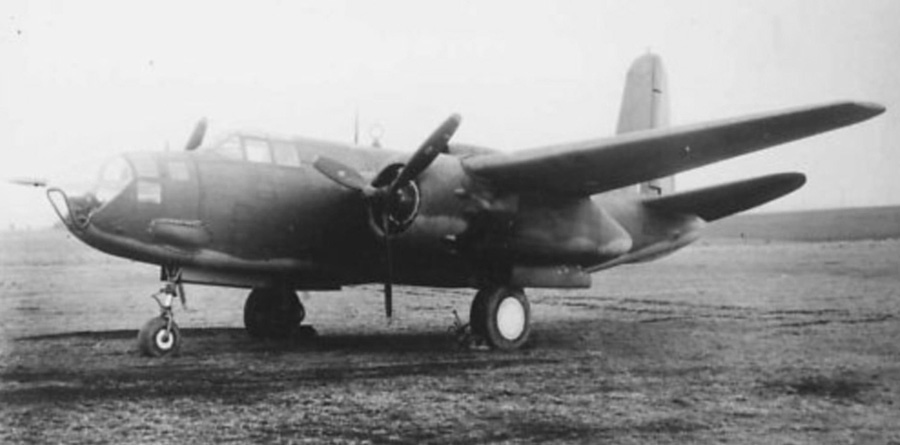
The aircraft and his history
The Douglas A-20 Havoc, also known as the Douglas DB-7, Douglas Boston and Douglas Havoc, was a United States attack, light bomber, intruder and night fighter aircraft of World War II. The aircraft serial number BZ590 was a Mark V - only 90 aircrafts of this version was built and the serial number ranged from BZ580 to BZ669 - assigned to the N° 18 Squadron (RAF) Burma of the 232 Wing (RAF).
April 21st 1945
The Douglas A-20K Boston Mark V sn BZ590 took of from the Forlì airfield at 20:54. The task was to reach a target in the surrounding of Taglio di Po along the Po River and to drop cluster bombs in the area and then going back in searching suitable targets. Probably, following the Po River to west, the BZ590 was hit by the anti-aircraft battery near Polesella. The damaged aircraft try to go back to Forlì falling down near Copparo. Three of the flyers were British - the pilot, Sergeant David Raikes, the navigator, Flight Sergeant David Perkins, and the wireless operator and gunner, Flight Sergeant Alexander Bostock. They were all aged 20. The crew's other gunner was an Australian - Warrant Officer John Hunt, of the Royal Australian Air Force - who was a year older.
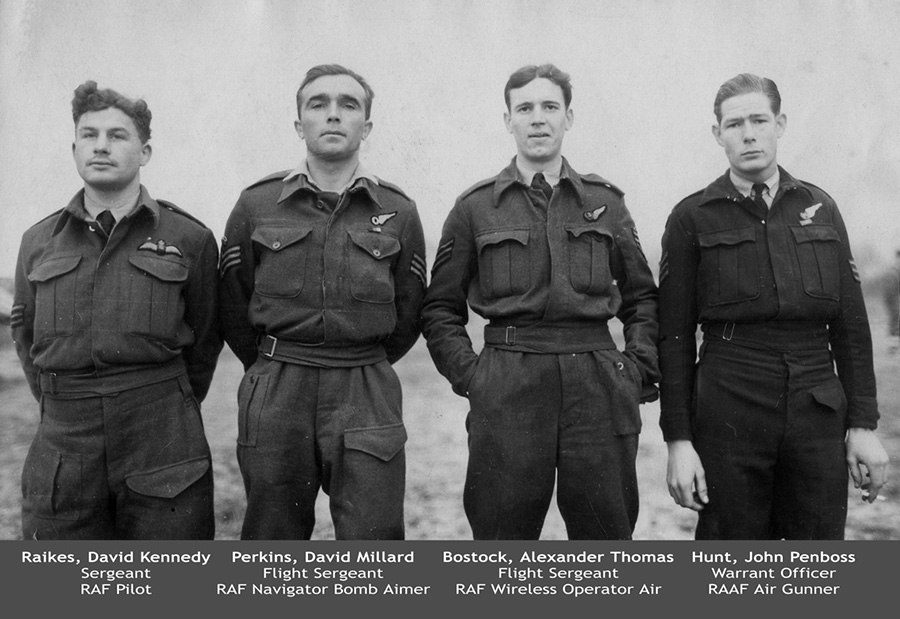
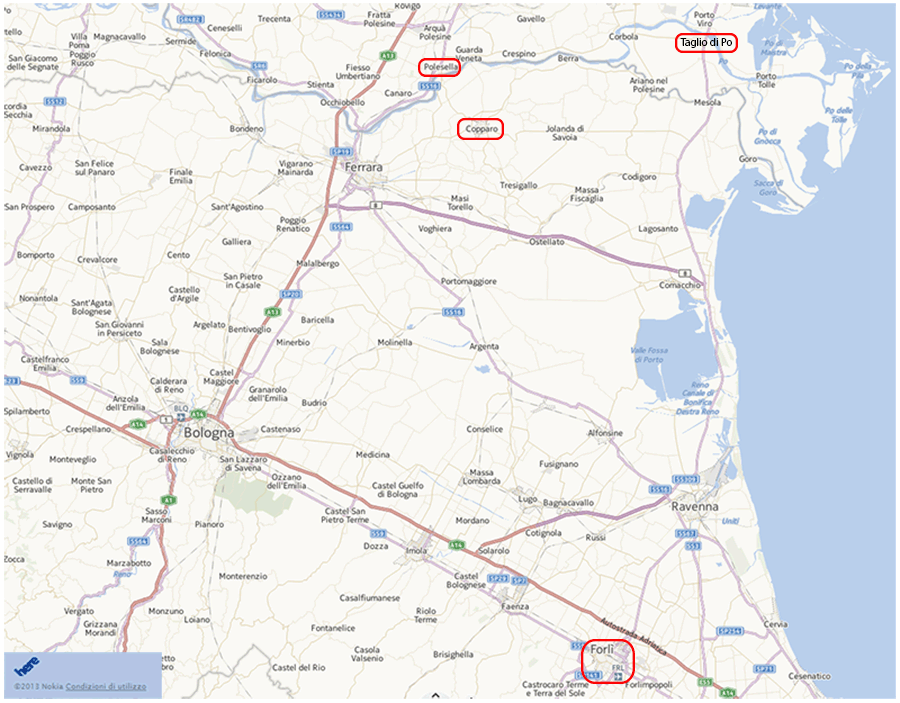
After the war
No graves of the crew of the Douglas A-20K Boston Mark V sn BZ590 were founded, so in 1949 the crew was declared Missing in Action. All the members of the crew are named on the Malta Memorial in La Valletta with the other 2298 Commonwealth airmen missed in the Mediterranean Theatre.
2006
An eye witness helps Archeologi dell'Aria to find the impact area near Copparo and light alloy wreck was found there as confirmation. He says the wreck burned for two days, then the carcass was picked over for some of its more valuable metal. But at some point it seems that either German or Italian forces covered much of the wreckage in the crater that the crash had caused.
2006-2011
The recover of the wreck remains in stand-by until the 2010 when further investigation and analysis performed on the crash site by "Archeologi dell'Aria" and "Air Crash Po" reveal some deep metallic mass. The recover of the wrecked aircraft was planned in July 2011.
July 23rd 2011
The dug-out was completed. The logistic of the dug-out was managed by the representative of the North Apennines Po Valley Park with members of the "Museo della Seconda Guerra Mondiale del fiume Po" from Felonica and the "Gotica Toscana npa" from Scarperia. The excavation team was composed by Archeologi dell'Aria, Air Crash Po, Museo di Felonica, Gotica Toscana. The restoration of the items founded in the dug-out was in charge of the team of the Museo di Felonica.
Who is "Pippo"
"Pippo" was an airplane that every now and then would just be there. And this plane was called "Pippo." No one ever understood if it was an enemy or friendly plane that was on reconnaissance, if it was German, American or Italian. It was "Pippo."You didn't see it because it was night, but you heard it. But, "Pippo" never caused any damage, never bombed, never machine gunned. "Pippo" just passed and traveled along. And it was heard often. Maybe you were asleep and another person was too and said, "Listen, it's Pippo." Well, you'd wake up and you'd hear it. But we never knew who this "Pippo" was. Many recall Pippo along these lines, but others experienced the airplane in more sinister ways. It strafed and bombed homes, and in some parts of Italy, dropped mines and explosives. As a whole, however, the Pippo narratives read remarkably the same. Although he frightened some and was fancied by others, he always flew at night, was unaccompanied, and had a distinctive sound.
The definitive version was published as Perry, Alan R., "Pippo: An Italian Folklore Mystery of World War II," Journal of Folklore Research, 2003 40(2):115-148.
The finding
The April 21, 1945, as stated by the eye witness, some parts of the wreck and the motors on the surface were taken away. In the field, there was a deep crater : the fuel and ammunition burned for hours and it was impossible to get close. The high temperature reached in the fire destroyed the main part of the remain of the crew and melted and the wreck. All the earth and the oxides extracted from the crater was sifted. The use of sieves assures that inside the material extracted no were left human remains. Thanks to this type of research has been possible to trace the small personal items like the ring and the watch. The examination of the discovered bones has decreed that belonged to 4 people.
The crew
When in 2011 we were able to combine the data and information, date and place of impact, testimonies, the analysis of the wrecks we managed to find the type of aircraft: it was a Douglas A20 Boston.This has allowed us to limit the search field. The group of enthusiasts who meet on the web has put together a colossal hunting: which squadrons were equipped with that aircraft? In such days how many have been lost? In which areas?The result is that in 1945 the Squadron NO. 13, 18, 55 and 114 of the 232 Wing of the Desert Air Force and the 47TH Bomber Group of the XXII Tactical Air Force were equipped with the Boston.The period of time, April 1945 restricts the field significantly, are potential candidates an aircraft of the 47TH BG and one of the NO. 18 Squadron. Between the scraps recovered there is a clock engraved with "H. J. Hunt 433038" and this is the Crash Report:
RAAF PERSONNEL SERVING ON ATTACHMENT IN ROYAL AIR FORCE SQUADRONSAND SUPPORT UNITS IN WORLD WAR 2 AND MISSING WITH NO KNOWN GRAVE.
433038 Warrant Officer HUNT, John Penboss Source: NAA: A705, 166/18/624 Aircraft Type: Boston Serial number: BZ 590 Radio call sign: Unit: 18 Sqn RAF Summary: Boston BZ 590 of No 18 (Burma) Sqn RAF, Central Mediterranean Force, took off from Forli drome at 2054 hours on 21 April 1945 to attack a river crossing target at Taglia Di Po followed by an armed reconnaissance of the Po Valley, Italy. The aircraft failed to return from this mission. Crew: RAF Sgt Raikes, D K (Pilot) RAF Flt Sgt Perkins, D M (Navigator Bombaimer) RAF Flt Sgt Bostock, A T (Wireless Operator Air) RAAF 433038 WO Hunt, J P (Air Gunner) Following post war enquiries and investigations, it was recorded in 1949 that the missing crew had no known grave.
Three of the flyers were British - the pilot, Sergeant David Raikes, 1807677, the navigator, Flight Sergeant David Perkins, 1801441, and the wireless operator and gunner, Flight Sergeant Alexander Bostock, 1818442. They were all aged 20. The crew's other gunner was an Australian - Warrant Officer John Hunt, 433038, of the Royal Australian Air Force - who was a year older. We have a picture of the crew, which kind of persons they were?
David Millard Perkins
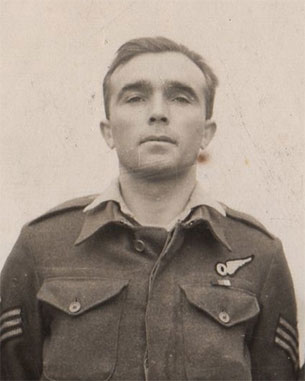
David Millard Perkins
David Millard Perkins, was born in Honor Oak in July 1924. His parents were Leonard and Annie Millard Perkins who lived in Sydenham. It is believed he had two sisters, Helen and Mary, and a brother Gordon. The last known address was Therapia Road and his parents lived in Border Road, Sydenham. David joined the RAF in Euston 13rd January 1942. He was a clerk. 5ft 11inches tall, brown hair and eyes. He was the navigator, Flight Sergeant.
Alexander "Alec" Bostock
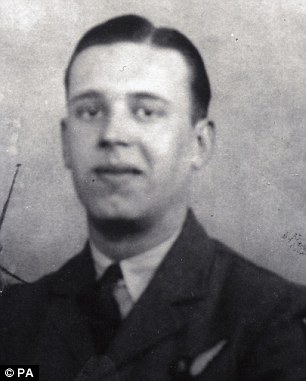
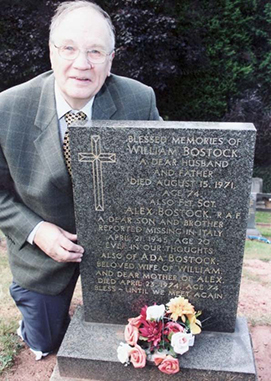
Alexander Thomas Bostock - Roy Plumb Presidente del consiglio comunale di Kimberley
Alexander Thomas Bostock, the wireless operator and gunner, Flight Sergeant. Born in Forest Row, Sussex. Kimberley's Town council chairman Roy Plumb stumbled across the grave of Flt Sft Bostock's parents - meaning his remains may finally be reunited with his family. Having read newspaper articles about the archeologists' find, Kimberley Town Council Chairman Roy Plumb said he was 'amazed' at his discovery. "I was walking down some steep steps to check on a repair job that needed doing when my eyes suddenly caught the name of Bostock on a distant gravestone," he said. "Upon taking a closer look I was amazed to discover that I was standing at the grave of William and Ada Bostock, the parents of the ill-fated Alexander, whose name was on the headstone.
Johnny Hunt
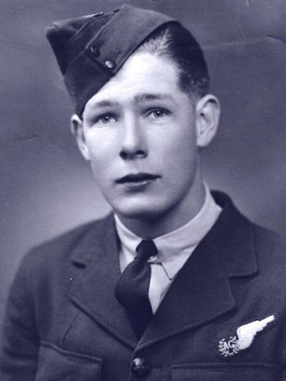
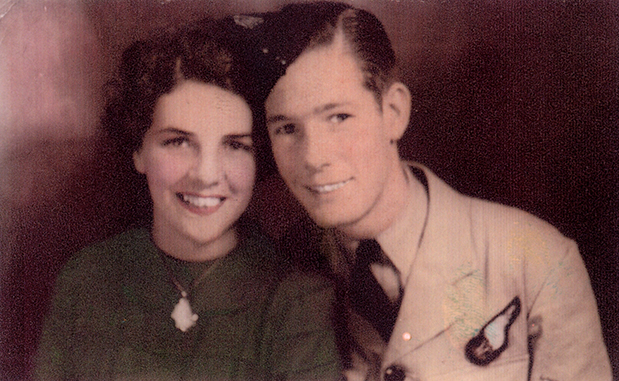
John Penboss Hunt - Jeannette e John
John Penboss Hunt, australian from Shoalhaven, New South Wales. Son of Benjamin James Hunt and Jeanette Ellen Hunt, 21 was the older of the crew. He was the only one married, his wife was Jean Audrey Hunt from Lidcombe. Enlisted in the RAAF and detached to the N° 18 Squadron. Warrant Officer, the gunner
David Kennedy Raikes
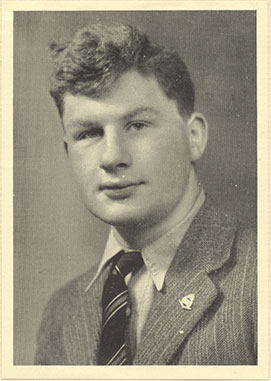
David Kennedy Raikes from the "The Poems of David Raikes"
David Kennedy Raikes was born at Blechingley, Surrey, on the third of ]une, I924. His roots, however, he always felt to be at Treberfydd, Breconshire, where his great-grandfather Robert Raikes had chosen "one of the most beautiful spots in Wales and built there ?rst a church, then a school and then his home". David is an amazing surprise: a web search says He was a poet and a writer. The David Raikes Poetry Prize is presented each year in his memory at the Radley College. A book published in the 1954 "The Poems of Davis Raikes", shows us an unespected person. Our pilot is described in a great way by Charles Wrinch in the introduction and David gifts us a portrait of his crew.
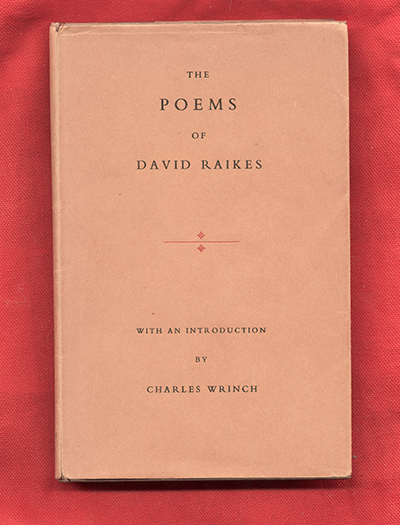
The Poems of David Raikes - Fantasy press 1954
From "The Poems of David Raikes" 1954 Fantasy press
The procedure of choosing each member had been rather like making a proposal of marriage.
"This crew business is a great thing, and it means a lot to me. Well, I've got a grand crew, I really have ... the best crew that ever was ... It's a thing the powers that be don't interfere with; crews form themselves, and so far as possible are kept intact once they are formed. Actually it seems to devolve on the pilot to gather his crew, being the captain.
We're a pretty diverse crew, individually, and a better crowd you couldn't wish for, either on the ground to drink. a beer with, or in the air to fly with ... Henry Moffat, my navigator, is a most amusing and interesting person. He is a lot older than me - 3 1 years old in fact unusually old for air crew ... and married. He had already done quite a few opera tional trips in Italy before he lost his pilot and had to start again. Before the war he was a customs officer in the civil service and ... when he was telling me the other night of some of his memorable drives through Wiltshire, Devonshire, Cheshire and other parts, I knew he is a man after my own heart, so far as countryside goes. Talking of the early morning mist rising over a certain village in Wiltshire -he claims it to be the most beautiful in England, and, since it is in Wiltshire, I should think. it is quite likely - made me feel not a little nostalgic, for so many picture memories throng to the mind in that association. He actually comes from Liverpool ... Then there's Alec Bostock, whom I perhaps know best of them. He's about my age, and one of the most good-natured, likeable people I know. Always ready to do anything, always full of fun, always talking me into a drink or a cigarette, and as keen as mustard all the while, he's a real friend ... Alec is from the Midlands ... the so-called 'sodden and unkind' Nottingham to boot. Boots, in fact, is the only thing!... And then Johnny Hunt, an Australian ... He's younger than me by about six months, but holds the Africa Star and the 1939-43 Star. He must have joined the Australian Infantry at an age when I was leaving Brambletye, and he fought with the A.LF. in Tobruk, El Alamein and Syria; not to mention some f1ghting he did with the Yanks in New Guinea just incidentally. Then he went back to Australia and transferred to the Air Force. Like many Australians he's an individualist, in that when he sets his mind to a thing not Air Commodores nor a thread of red tape will deter him. And I can be quite conf1dent that nothing will go wrong in his department when we're in the air. He's a great person, the sort of man one likes to have by one in a scrap. On the surface at least you'd say, I think, that he is very opposite to me in many ways ... Johnny's married, by the way; the sort of thing he would do, but then I think a man who returns home after three and a half years fighting overseas is entitled to anything, including a wife ... So I've got two married men in my crew, though I suppose our average age is not more than 21. I'm very happy to be with the crowd I am with, and enjoying things very much, and look ing forward to the future very much too."
The crew remained together to the end, although for the last flight Henry Moffat was replaced by another Navigator.
17 - 18 Luglio 2013
The 17th of July 2013 the delegation of the crew's relatives was welcomed at the Museo della Guerra del fiume Po in Felonica (Po River WWII Museum), The Museum, hosted inside the restored Palazzo Cavriani, is a centre devoted to the memory of the war events that took place in the areas along the Italian great river during the Second World War.Since the 17th of July the Museum dedicates an exhibition room to the Douglas A-20K Boston BZ590 and his crew. The exhibition room was inaugurated with the relatives of the crew and during the ceremony some of the personal items found in the dug-out were returned to the relatives.
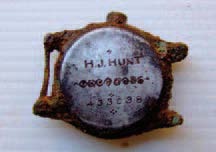
The watch of John Penboss Hunt
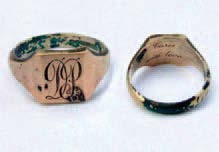
The ring of Sgt. Perkins, inside: «Chris with love»
Now on July 18th 2013, 68 years after they were killed, the crew have been laid to rest at a Commonwealth war cemetery in the city of Padua.
During the ceremony, David Raikes, nephew of Sergeant David Raikes, reads his uncle's poem 'Let it be Hushed' at the graveside. The poem was published in the book "The Poems of David Raikes" 1954 - Fantasy press
Let it be hushed
Let it be hushed; let the deep ocean close Upon these dead. Others may laud their parts, Raise monuments of marble in their names. But we who flew with them and laughed with them, - We other crews who, living side by side, In outward contacts slowly came to know Their inmost parts, would rather leave untouched The wound we healed, the love we buried there. These men knew moments you have never known, Nor ever will; we knew those moments too, And talked of them in whispers late at night; Such confidence was born of danger shared. We shared their targets, too; but we came back. Lightly we talked of it. We packed their kit, Divided up such common useful things As cigarettes and chocolate, rations stored Against a rainy day that never came. 'And they cast lots among them!' Someone said, 'It was a pity that he wore his watch; It was a good one, twenty pounds he said He paid for it in Egypt. Now, let's see, Who's on tonight. Ah, Taffy - you've a good one! You'd better leave it with me.' And we laughed. Cold were we? Cold at heart. You get that way. Sometimes we knew what happened; how they crashed. It was not always on the other side. One pranged upon the runway, dipped a wing, The navigator bought it, and the gunner. The other two got out, a little shaken. Bob crashed when doing an air test, just low flying - At least they think it was, they couldn't say. The plane was burning fiercely when they found it; One man thrown clear, still living, but he died On way to hospital. The loss was ours, - Because I shared an aeroplane with Bob. We had to get another D for dog. And some did not come back. We never knew Whether they lived - at first just overdue, Till minutes changed to hours, and still no news. One went to bed; but roused by later crews, Asked 'Were they back yet?' and being answered 'No', Went back to sleep. One's waking eyes sought out the empty beds, And 'Damn', you said, 'another kit to pack'; I never liked that part, you never knew What privacies your sorting might lay bare. I always tried to leave my kit arranged In decent tidiness. You never knew. But that is past. The healing river flows And washes clean the wound with passing years. We grieve not now. There was a time for tears, When Death stood by us, and we dared not weep. Let the seas close above them, and the dissolving deep.
The news around the world

18 July 2013 Boston BZ590 World War II Crew Buried
Lost RAF bomber crew finally laid to rest
Australian WWII bomber crew member laid to rest with military honours in Italy
![Members of the Queen's Colour Squadron lower the single coffin into the grave [Picture: Mike Drewett, Crown copyright] Members of the Queen's Colour Squadron lower the single coffin into the grave [Picture: Mike Drewett, Crown copyright]](https://assets.digital.cabinet-office.gov.uk/government/uploads/system/uploads/image_data/file/13821/M_C-UNC-20130718-7537g.jpg)
No. 18 Squadron RAF - The History
This paragraph is part of Rickard, J (30 October),No. 18 Squadron (RAF): Second World Warhttp://www.historyofwar.org/air/units/RAF/18_wwII.html
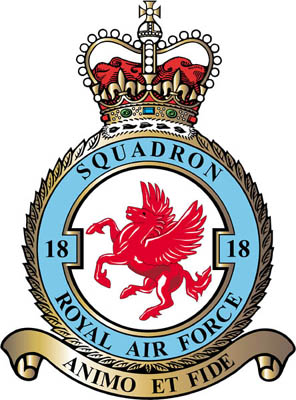
No. 18 Squadron was a medium bomber squadron that spend a large part of the Second World Wars overseas, starting in France in 1939-40 and then serving on Malta, in North Africa, in Sicily and in Italy.
Up until May 1939 the squadron had been equipped with the Hawker Hind. It then received the Bristol Blenheim Mk I, the start of a relationship with the Blenheim that would last until the spring of 1943.
At the outbreak of the Second World War No. 18 Squadron was sent to France as part of the Air Component of the BEF. There it took part in the first ten days of the disasterous campaign of May 1940, before retreating to Britain.
This was followed by the squadron's wartime stay in Britain, lasting for seventeen months. During this period the squadron was engaged in attacks on the German invasion barges during 1940, before "leaning over the channel" in 1941 to attack German installations.
In October 1941 the squadron's aircraft flew to Malta, where they took part in raids against Axis shipping. By January 1942 the squadron was down to five aircraft, and was withdrawn to Egypt.
The squadron then reformed in Britain with new aircraft and new crews but many of the same ground crews. Most of 1942 was spent in Britain, before the squadron was moved to North Africa, in November.
The squadron remained in the Mediterranean theatre for the rest of the war, accompanying the Allied armies as they advanced from Algeria to Tunisia, across to Sicily and then finally to Italy. While based in North Africa, the squadron was re-equipped with the Boston bomber. While based in Italy, the squadron was used against targets in northern Italy and the Balkans.
Aircraft
- April 1936-May 1939: Hawker Hind
- May 1939-February 1940: Bristol Blenheim I
- February 1940-September 1942: Bristol Blenheim IV
- September 1942-April 1943: Bristol Blenheim V
- March 1943-July 1944: Boston III and IIIA
- July 1944-March 1946: Boston IV and V
Five Blenheim Mark IVs (Z5893 'W' nearest) of No. 14 Squadron RAF in flight over the Western Desert - Copyright © 2008-2013 World War II Today.
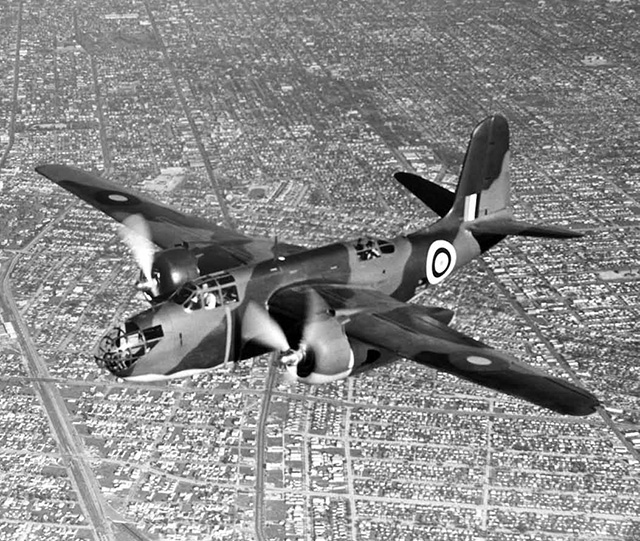
A new Douglas A-20 Boston bomber, built in USA for the Royal Air Force, has a trial flight over Southern California before delivery to Great Britain
Group and Duty
- September 1939-May 1940: Air Component, France
- May 1940-October 1941: Attacks on Channel Ports, France and the Low Countries
- October 1941-January 1942: Malta
- May-November 1942: United Kingdom
- November 1942-August 1943: North Africa
- August-October 1943: Sicily
- October 1943-end of war: Italy
Location
United Kingdom
- 12 September 1936-30 September 1939: Upper Heyford
France
- 30 September 1939: Beauvraignes
- 16 October 1939: Meharicourt
- 17 May 1940: Poix
- 19 May 1940: Crecy and Abbeville
United Kingdom
- 20-26 May 1940: Watton
- 26 May-12 June 1940: Gatwick
- 12 June-8 September 1940: West Raynham
- 8 September 1940-3 April 1941: Great Massingham
- 3 April-13 July 1941: Oulton
- 13 July-16 August 1941: Horsham St. Faith
- 16-27 August 1941: Manston
- 27 August-12 October 1941: Horsham St. Faith
Malta
- 12 October 1941-21 March 1942
Egypt
- 10 January-5 February 1942: Helwan
- 5-14 February 1942: L.G.05
- 14 February-21 March 1942: Fuka
United Kingdom (with new crews)
- 13-15 May 1942: Dundonald
- 15-20 May 1942: Ayr
- 20 May-23 August 1942: Wattisham
- 23 August-11 November 1942: West Raynham
- 11-30 November 1942: Bilda
Algeria and Tunisia
- 30 November- 5 December 1942: Canrobert
- 5-17 December 1942: Setif
- 17 December 1942-7 March 1943: Canrobert
- 7 March-17 April 1943: Oulmene
- 17 April-7 June 1943: Souk el Arba
- 7 June-3 August 1943: Grombalia
Sicily
- 3-9 August 1943: Gela West
- 9-24 August 1943: Comiso
- 24 August-7 October 1943: Gerbini
Italy
- 7-30 October 1943: Brindisi
- 30 October 1943-16 February 1944: Foggia
- 16 February-14 June 1944: Marcianise
- 14-25 June 1944: Nettuno/ La Blanca
- 25 June-18 July 1944: Tarquinia
- 18 July-18 October 1944: Cecina
- 18 October 1944-7 March 1945: Falconara
- 7 March-13 May 1945: Forli
- 13 May 1945-12 September: Aviano
Greece
- 12 September 1945-13 March 1946: Hassani
Ref: Rickard, J (30 October), No. 18 Squadron (RAF): Second World War
